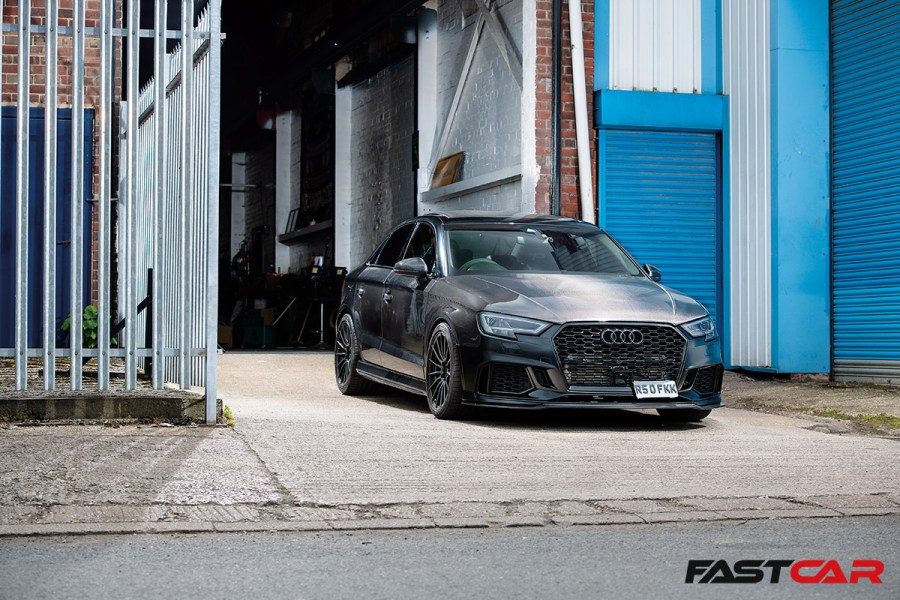Having stepped back from motocross after an accident, Adam Smith has worked hard to translate the raw adrenaline rush of a motorbike into four-wheeled form – and this tuned Audi RS3 saloon is the unhinged end result.
Physicists might disagree, but speed isn’t a black and white concept. That fingertip-tingling rush of adrenaline varies wildly depending on what you’re sat in, and the gap becomes even wider once you factor bikes into the equation. Ask anyone who’s grown up on two wheels, and they’ll tell you that the buzz of riding is hard to replicate in a car, but it also isn’t out of reach for the most determined owners. In Adam Smith’s case, that point of reference set him on a course for a project fleet pushing out just shy of 2,000bhp – and almost half of that comes from this car.
“For me, cars are all about the adrenaline and speed,” he tells us. “I was brought up on motocross, so I was into bikes first. The adrenaline rush is unbelievable, but I had bad accident and nearly broke my back, so I decided to step back and calm down a bit. That’s when I got a taste for cars – I didn’t pass my test until I was 19.”
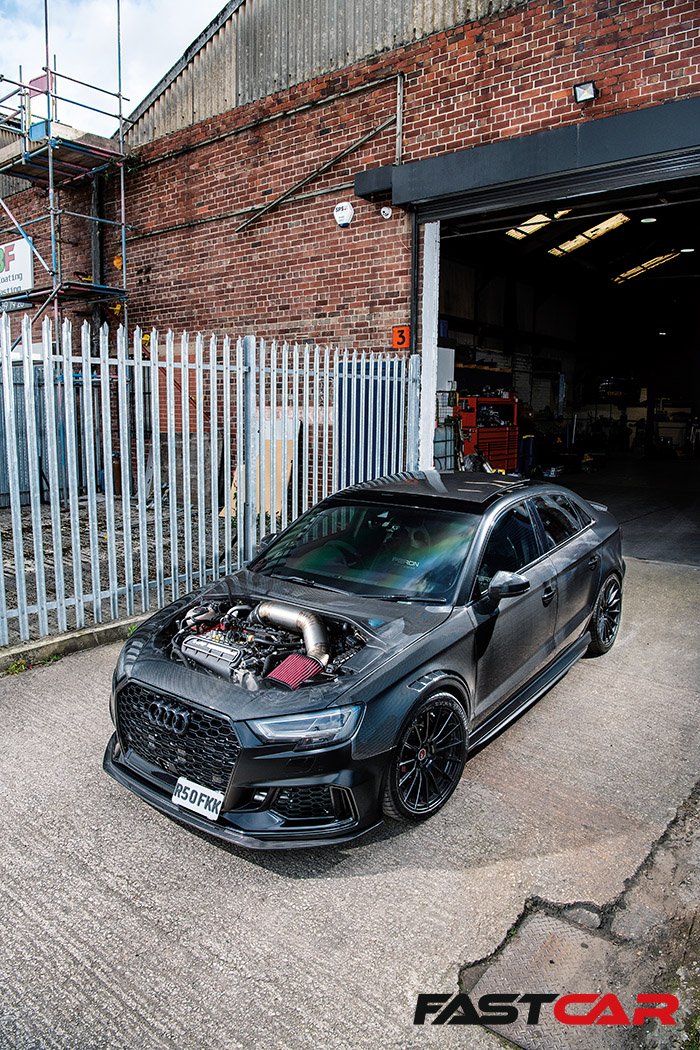
From bikes to cars
A self-confessed Honda guy by background (perhaps a legacy of those motocross days), cars have become more than a hobby in the meantime. Adam now fits PPF for a living, which means he’s often working on supercars, and a need for boost has lured him away from VTEC. Given where he started out, forced-induction Volkswagen Group products hasn’t turned out to be a toe dip. His first, a 2008 Leon Cupra, ended up north of 500bhp before being embarrassed by a quattro-equipped Audi, and four-wheel drive has helped push the boundaries even further.
“I sold the Cupra for an 8P generation S3 – this would have been back in 2014-15,” he continues. “It was a bit tame by comparison. I went daft with the Cupra, but I didn’t want to take out all of the reliability with the Audi, so I left it at Stage Two Plus. It was good for about 367bhp, and I literally kicked its head in every day without any problems. It did a 12.3-second run at Santa Pod, which was quicker than some of the DSG cars – and it’s the only project I’ve missed after selling up.”
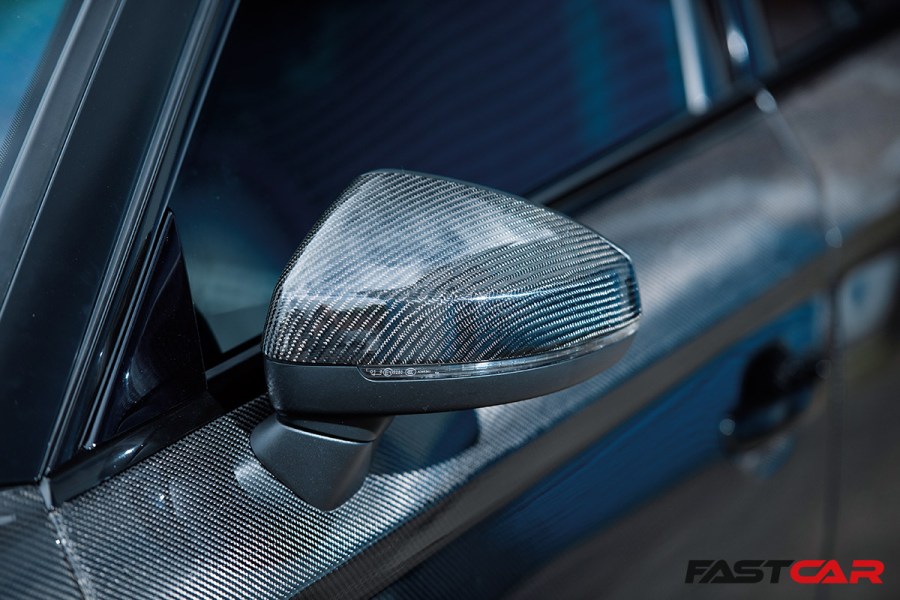
Switching to a Golf R Mk7
That mechanical sympathy didn’t last long. Lured by a newer engine and platform, not to mention a fast-growing selection of hardware to wring more performance out of both, Adam soon traded into a Mk7 Golf R. This quickly snowballed into a destructive exploration the drivetrain’s power-handling capability, which in turn was a useful conversation-starter with another Sheffield-based owner on the same expensive path. Tom Parker, of TC Performance (PVW 09/23) was discovering similar weak points with his Golf R, but the two projects took very different directions having exhausted the limits of the Volkswagen parts bin.
“The Golf went through three gearboxes in eight months, and Tom was smashing his to bits at the same time. When I sat down with Will at VRS, he told me I could either go for the DQ500 ‘box from the RS3, which would be bulletproof, or start again with a different platform. The conversion was about £7,000, so I figured I might as well just buy an RS3 instead. Tom went down the other route and fitted a five-pot in his Golf instead.”
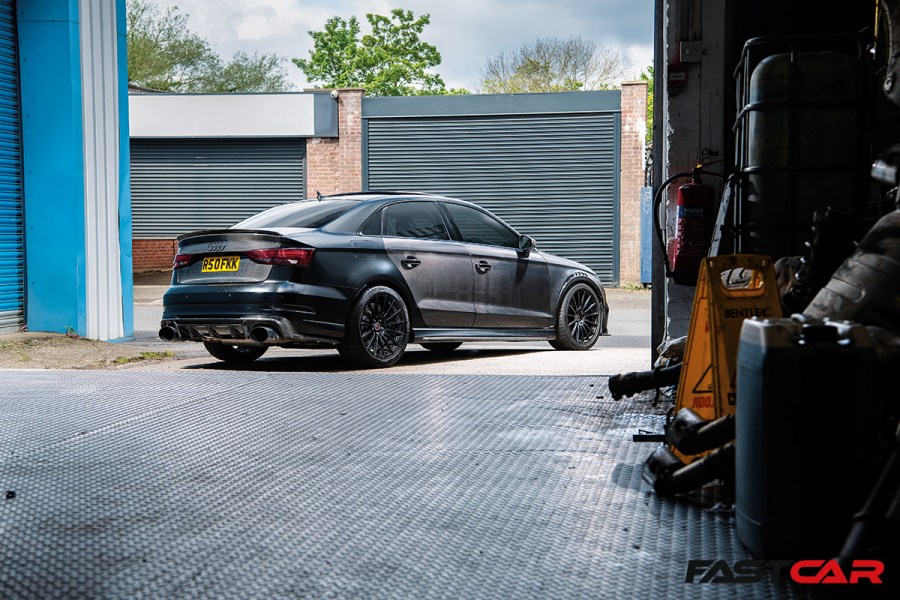
Buying the Audi RS3 saloon
With plans to go all out on the build, Adam wasn’t content to settle for anything less than the perfect base car. It took weeks and several rejections to track down a suitable RS3 – an all-options ticked saloon, bought in the UK and one of only two (at the time) living in Ireland. The original owner had spared no expense, adding dynamic chassis control, genuine Audi wind deflectors and a set of four R8 20-inch front wheels for £5,000. Ceramic brakes were the only missing component, and they’d have been replaced at some point anyway.
However, raising the cylinder count wasn’t as much of an upgrade as he was expecting. “I thought I’d made a massive mistake at first,” he laughs. “All of the roads on the way back, going through Ireland and Scotland, were mega but it was a big change going from a 560bhp Golf R that was aggressive into a stock RS3. The plan was to track it, so I opened the can of worms and went Stage Two for a while. Then I got used to the power, and I wanted more…”
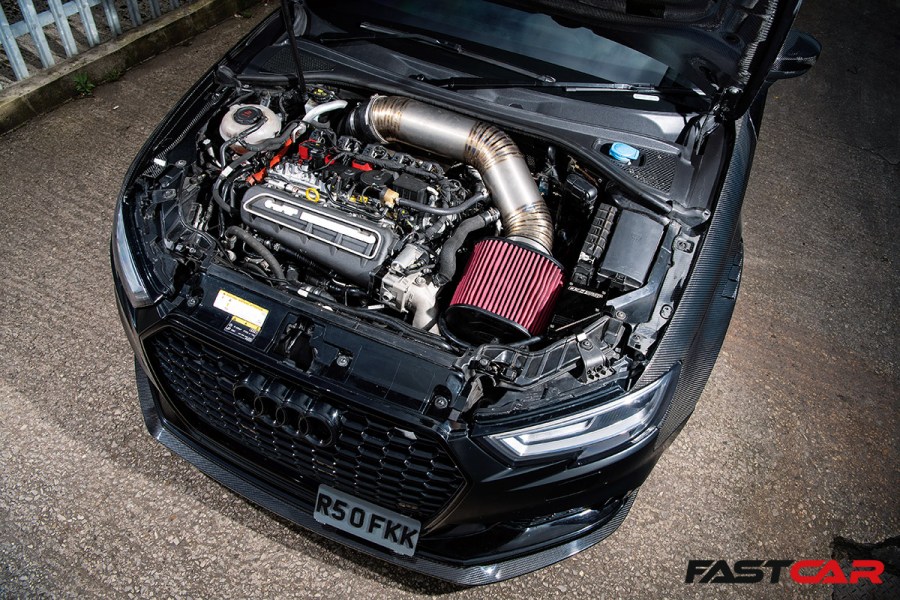
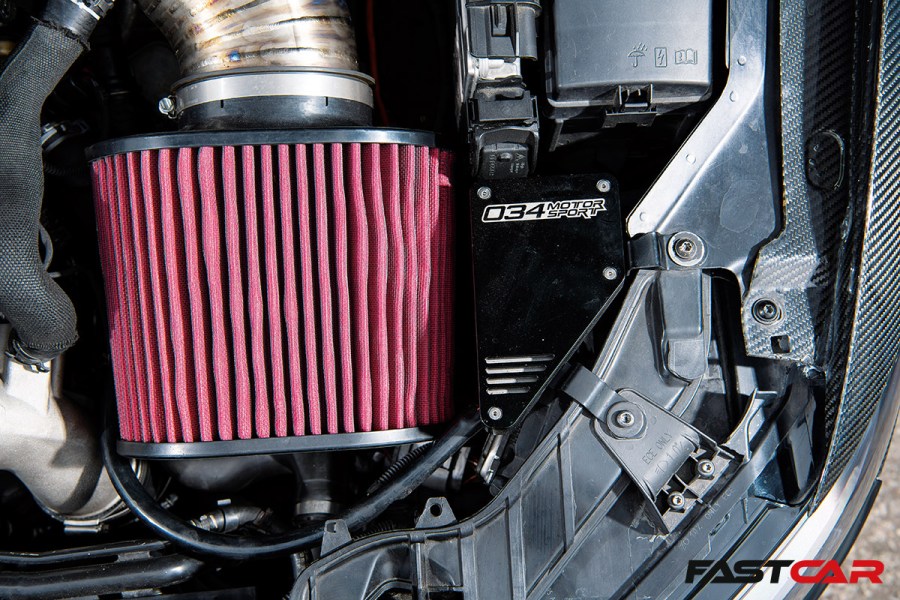
Upping the power on the tuned Audi RS3 saloon…
Modern engines put almost-unimaginable performance within reach, but there’s no simple (read: cheap) route to a thousand horsepower. The factory five-pot expired soon after it was paired with a large hybrid turbo, and you can’t buy much of its replacement over the counter at an Audi parts department. After a week of researching trustworthy engine builders, Adam selected Race Developments to put together a proven package. It’s fully forged internally, fitted with wet cylinder liners (which are plumbed into the coolant circuit) and ported for improved airflow – all of which helps when you have a taste for boost.

“People have got in their heads that you can get 1,000hp out of these cars,” he shrugs, tugging the bonnet release. “You can… but you’re on borrowed time unless you build it properly.”
There’s a real sense of that ethos once you get a look around the business end of the Audi. Packed in at the back of the bay is a 76mm turbocharger, fed by a five-inch diameter custom inlet and mounted with Nortech/Peron hardware – including the intercooler and pipework. That boost is channelled through a 56mm larger, flow-optimised CTS Turbo throttle body and RPC Motorsport runners with 1,300cc injectors. The result? A 1,067bhp assault on the senses after its dyno tuning session at Peron Automotive, and a realisation that it’s not only mechanical parts that have a limit.
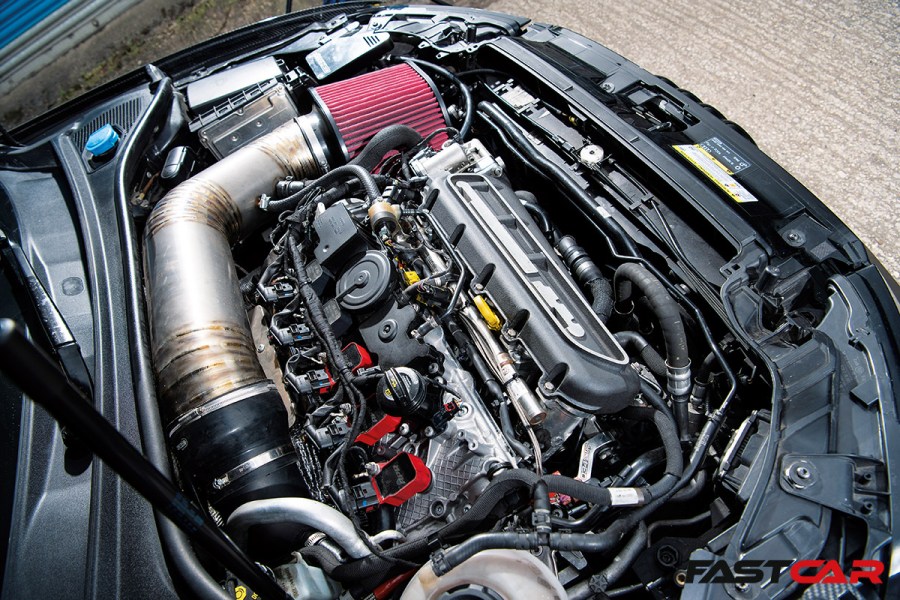
…and then dropping the power to 900bhp
“I don’t shy away from a challenge, but at 1,067bhp it was pointless,” Adam tells us. “Tim at Race Developments told me to wind it back a bit so I could enjoy it more without worrying about breaking it. At 900bhp on ethanol it’s a lot tamer and more controllable – the turbo is so big that it feeds in nicely then comes in hard and rips all the way to the redline. It’s so different to everything else. You need to plan 200 metres ahead, and over-analyse everything, before you push it.”
Having switched out of the Golf due to transmission issues, Adam cut no corners selecting the hardware he’d task with putting the RS3’s ferocious power to the tarmac. A Wavetrac limited-slip differential and Syvecs Haldex controller – which enables him to adjust the level of four-wheel drive assistance on the fly – provide more grip than the standard spec, while the 034Motorsport catch can captures oil vapours forced out under load instead of releasing them into the bay.
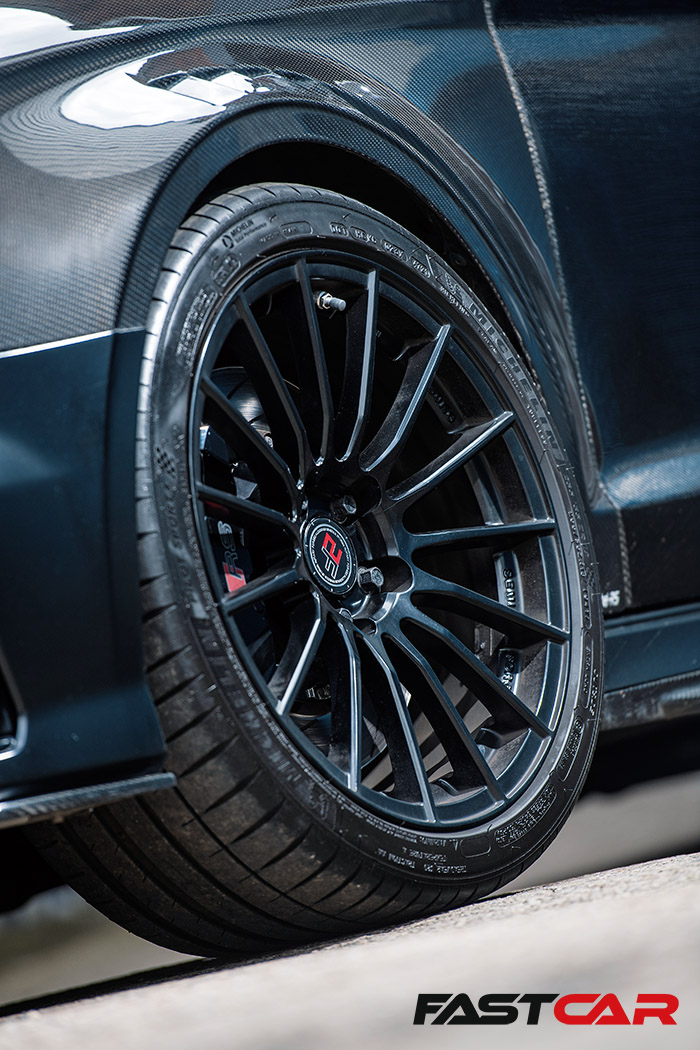
Chassis upgrades on the tuned Audi RS3
The original owner’s exhaustive option-ticking didn’t amount to much as the powertrain spec evolved. Despite Adam’s determination to stick with Audi’s DCC setup, the factory shocks had developed a tendency to bottom out, even after being recalibrated. They’ve since made way for KW Clubsport coilovers with stiffer, lighter and fully adjustable tubular subframes from Verkline, and the car has since been corner-weighted with bespoke suspension geometry to maximise traction as it unleashes the full force of its powertrain.
That process also led to the R8 wheels outstaying their welcome, though this owes more to Sheffield’s cratered road network than time on track. Adam initially downsized to 19-inch HRE wheels, then worked with 2 Forge to develop the tailor-made 18s it wears today. The ZF1s measure 18×9 inches with a custom 43mm offset, adjusted to get the fitment perfect, and they’re wrapped in unstretched Michelin Pilot Sport 4 tyres. At more than twice the factory power output, there’s no room for a weak link in the chain.

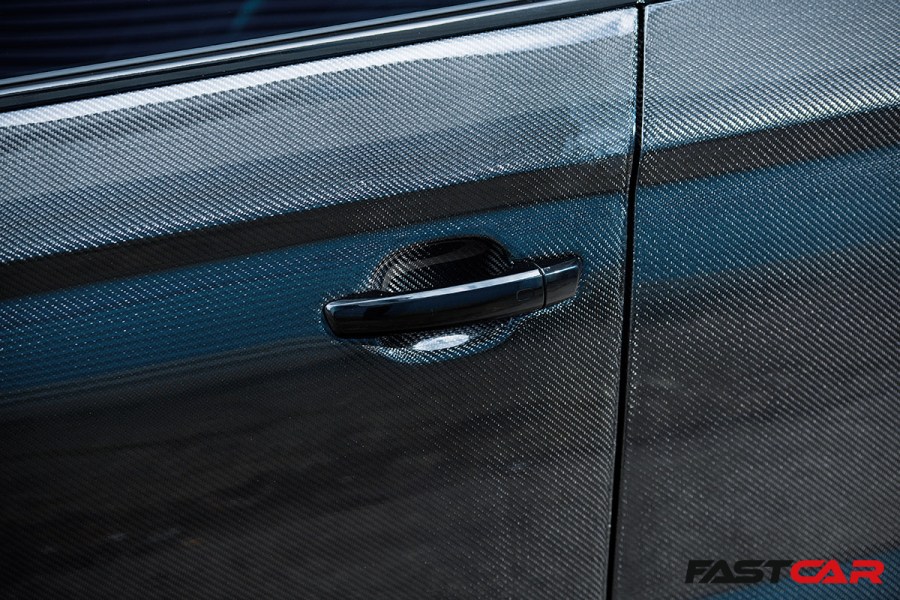
Tuned Audi RS3 weight saving
Nor any excess weight, as Adam continues to explain. “A couple of years ago I was sat at home bored, and I got this daft idea that it would look sick if I took the panoramic roof glass out and replaced it with carbon fibre. Once I’ve set my mind on something, I’ve got to do it, so I called a few companies in the UK then discovered Dimitar at Mcomposit in Bulgaria. He loved the idea, bought a roof and made me a mould. I wanted it to look good, but it also saves about 10kg.”
Already impressed, they continued to spitball ideas for the saloon. Mcomposit sells drag-spec doors for the RS3, but they’re little more than a skin. Adam’s are custom made in OE style, which enabled a bit more weight shedding while extending that holographic weave across the bodywork while retaining the door cards and windows. In turn, they’re matched to an Mcomposit boot lid, louvred wings from Karbel, and an Automotive Performance splitter. And yes, if you’re wondering how Tom Parker’s RS3-swapped Golf ended up with carbon fibre doors, it’s rooted in the same conversation.
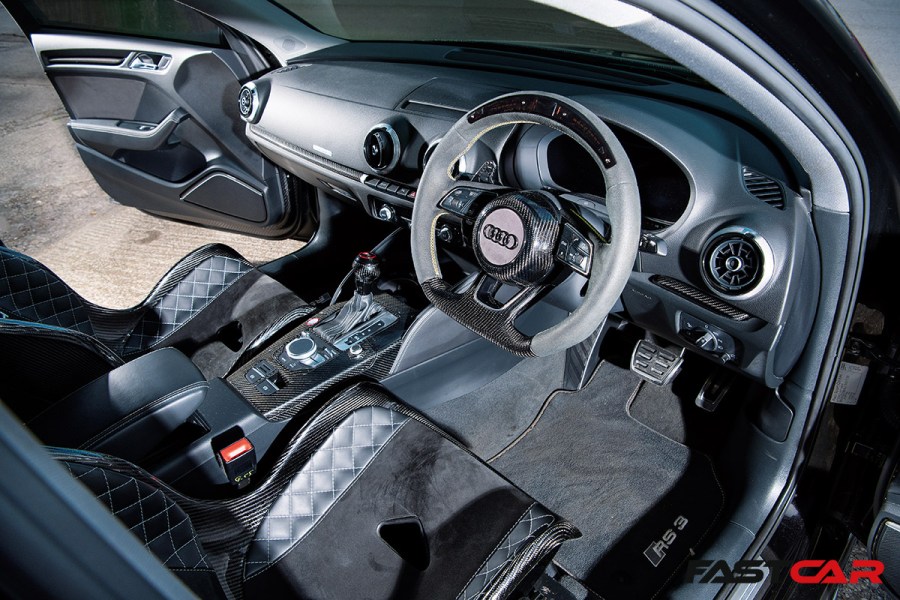
Interior modifications on the tuned Audi RS3
The weight-saving continues inside, where the Tillet carbon fibre seats tip the scales at just over 3kg apiece, with barely any extra added by the plush Cherry Upholstery leather-trimmed pads. Diamond-stitched to match the rear bench, they’ve gained a couple of additional layers of memory foam for road use. Carbon fibre accents on the centre console match the original elements on the dashboard, door trims and custom Berg Auto Design steering wheel, which also includes an LED boost and rpm gauge with a shift light.
Effectively, this all unlocks even more potential from the engine. The Audi weighs 1,342kg with a half tank of fuel, which is almost 200kg lighter than it was out of the factory despite the near-complete interior. Although daily driver duty has shifted to his “heart and soul” project – a 408bhp Caddy TDI – Adam is quick to point out that the RS3 is still very much a road car.
“Everyone looks at the seats and thinks they’ll be like sitting on a flat bench,” he tells us. “They’re fitted to me, so once I’m anchored in place I’m not moving, but once you’re in them they’re comfy as hell. I’ve done a lot of driving since I fitted them, and they’re absolutely wicked.”
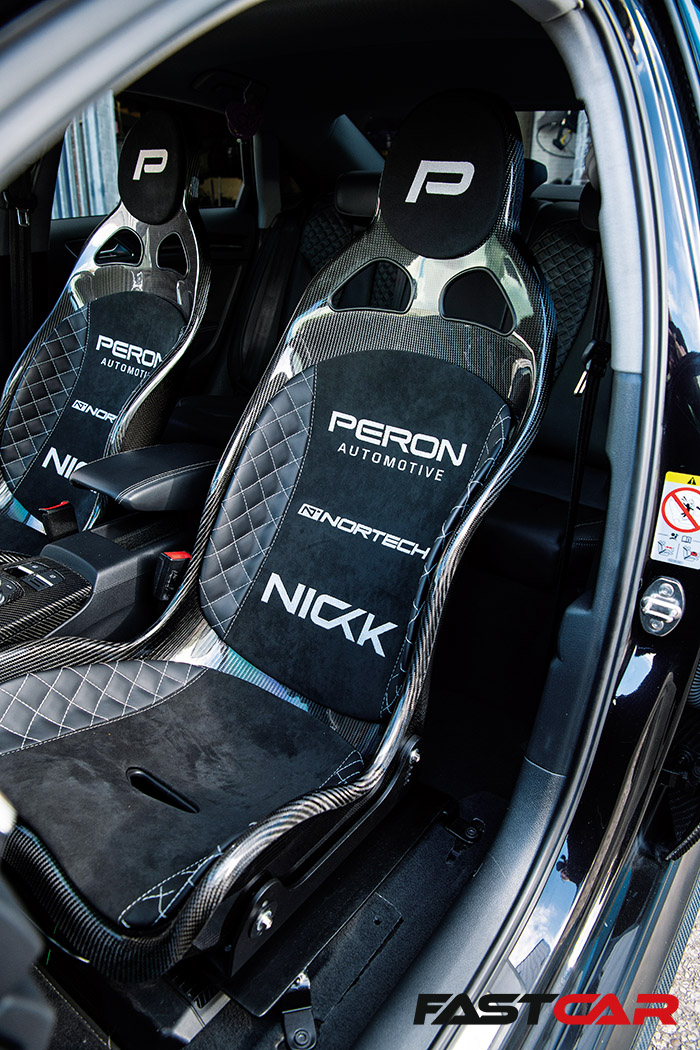
What’s next for the tuned Audi RS3?
At this stage of the build, that enjoyability is essential. The tuned Audi RS3 got its first show outing at Ultimate Dubs, its understated aggression made even more impactful by the lack of a blow-by-blow social media build thread or a steady evolution at previous events. There’s more to come, too. Expect to see the svelte saloon, now fitted with a half roll cage and drag-spec Wilwood brakes, making a few appearances at Santa Pod during the coming months, and it might not be alone when it does.
“I’m not spending any more money on the RS3 – there’s always something you can do, but I’m not planning to race it, so there’s no need,” he says. “But my other project, which I’m hoping to finish soon, is a SEAT Arosa with a PD engine that should be about 500bhp with nitrous when it’s done. That thing scares the life out of me, the aim is to get it into the nines at Santa Pod and embarrass a few people when I do.”

In the meantime, Adam is still pursuing that motorsport-derived sensation of speed. There’s still space in his life for an Ariel Atom track toy, which is about as close as you can get to low-weight bike thrills on four wheels, and the tuned Audi RS3 is earmarked to passed on to his son once he turns 21. As handovers go, that ought to set a similarly high expectation of performance in the next generation – and with 900bhp as a reference point, who knows where that thread might lead.
Love cars like this? Then don’t miss our premier events this year. Check out our Trax event at Silverstone, as well as our German Car Festival show at Goodwood Motor Circuit. Don’t miss out!
Words: Alex Grant. Photos: Ade Brannan.

